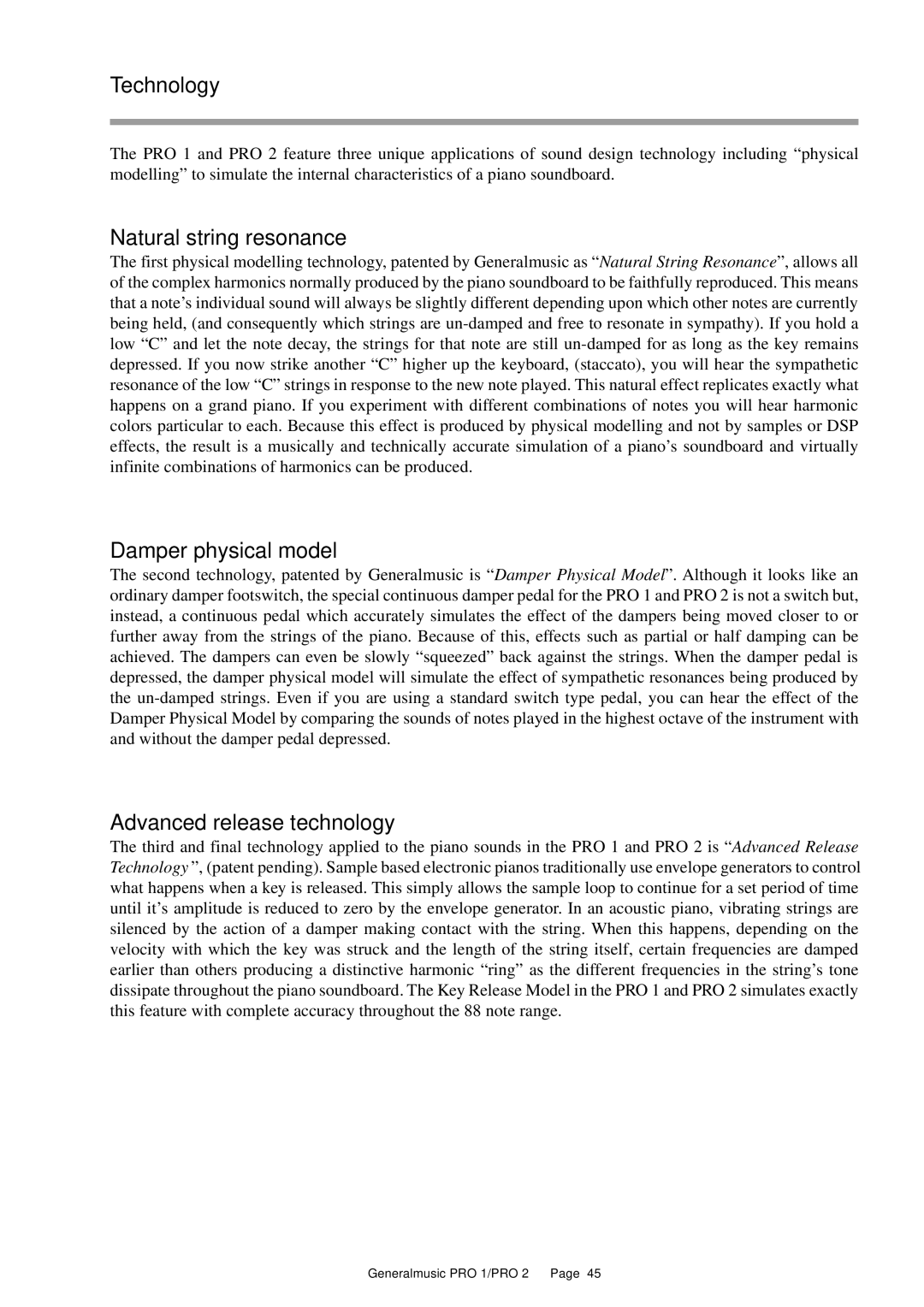Technology
The PRO 1 and PRO 2 feature three unique applications of sound design technology including “physical modelling” to simulate the internal characteristics of a piano soundboard.
Natural string resonance
The first physical modelling technology, patented by Generalmusic as “ Natural String Resonance”, allows all of the complex harmonics normally produced by the piano soundboard to be faithfully reproduced. This means that a note’s individual sound will always be slightly different depending upon which other notes are currently being held, (and consequently which strings are
Damper physical model
The second technology, patented by Generalmusic is “ Damper Physical Model”. Although it looks like an ordinary damper footswitch, the special continuous damper pedal for the PRO 1 and PRO 2 is not a switch but, instead, a continuous pedal which accurately simulates the effect of the dampers being moved closer to or further away from the strings of the piano. Because of this, effects such as partial or half damping can be achieved. The dampers can even be slowly “squeezed” back against the strings. When the damper pedal is depressed, the damper physical model will simulate the effect of sympathetic resonances being produced by the
Advanced release technology
The third and final technology applied to the piano sounds in the PRO 1 and PRO 2 is “ Advanced Release Technology ”, (patent pending). Sample based electronic pianos traditionally use envelope generators to control what happens when a key is released. This simply allows the sample loop to continue for a set period of time until it’s amplitude is reduced to zero by the envelope generator. In an acoustic piano, vibrating strings are silenced by the action of a damper making contact with the string. When this happens, depending on the velocity with which the key was struck and the length of the string itself, certain frequencies are damped earlier than others producing a distinctive harmonic “ring” as the different frequencies in the string’s tone dissipate throughout the piano soundboard. The Key Release Model in the PRO 1 and PRO 2 simulates exactly this feature with complete accuracy throughout the 88 note range.
